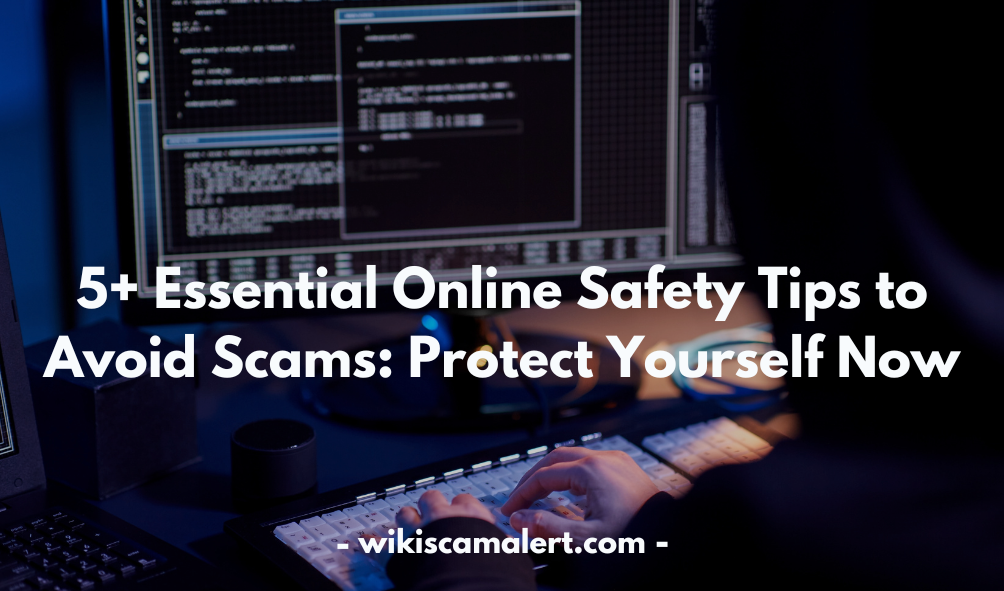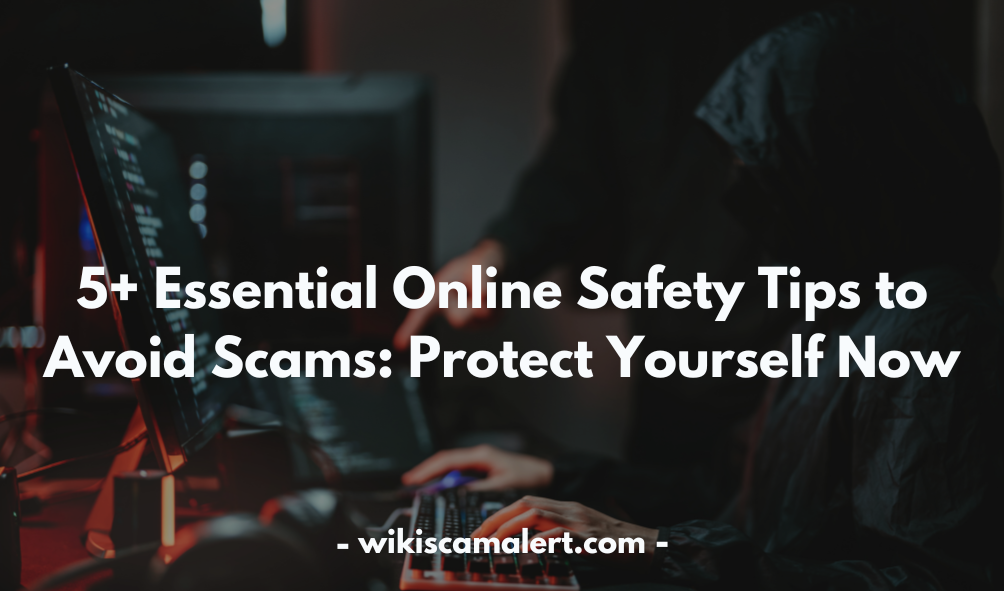Introduction
The digital world is full of opportunities, but it also comes with risks. Cybercriminals constantly evolve their tactics, using phishing scams, identity theft, and financial fraud to target unsuspecting users. Understanding and implementing essential online safety tips can protect your personal data, finances, and digital identity.
To help you stay one step ahead, we’ve compiled the most effective online safety tips to avoid scams and keep your information secure!

1. Stay Alert: Recognize and Avoid Online Scams
Cybercriminals use deceptive emails, texts, and messages to trick victims into sharing sensitive information or making unauthorized transactions.
How to Protect Yourself:
- Never click on suspicious links or download unknown attachments.
- Verify the sender’s identity before responding to urgent messages.
- Be cautious of emotional manipulation tactics, such as fake emergency requests from “family members.”
Scam Alert: A common scam message: “Hi Mum, I broke my phone. Can you message me on my new number? I’m texting from a friend’s phone.” Always verify before taking action!
2. Strengthen Your Password Security
A weak password makes it easy for hackers to gain access to your accounts.
Best Practices for Strong Passwords:
- Use a mix of uppercase, lowercase, numbers, and special characters.
- Create passwords at least 12-16 characters long.
- Use a passphrase for added security.
- Never reuse passwords across different accounts.
Bonus Tip: Consider using a password manager to securely store your credentials.
3. Activate Two-Factor Authentication (2FA)
2FA adds an extra security layer, ensuring only you can access your accounts—even if your password is compromised.
Enable 2FA on:
- Email accounts
- Social media platforms
- Banking & payment apps
This simple step significantly enhances online security!

4. Verify Website Security Before Making Purchases
Online shopping scams are on the rise. Fake websites steal credit card details and personal information.
How to Spot a Secure Website:
- Look for HTTPS in the URL (the ‘S’ stands for SECURE!).
- A padlock icon should be visible in the address bar.
- Check customer reviews and research before purchasing.
Pro Tip: If a deal seems too good to be true, it probably is!
5. Beware of Phishing Scams
Phishing emails and messages trick users into revealing login credentials or financial information.
Warning Signs of Phishing:
- Poor spelling & grammar in emails.
- Urgent language pressuring you to act fast.
- Suspicious links directing you to fake login pages.
Recent Scam Alert: Fraudsters impersonate financial institutions, sending fake emails claiming: “Your account will be frozen unless you update your details now.” Always verify directly with your bank!
6. Stay Educated: Knowledge is Your Best Defense
Scammers adapt their methods constantly. Staying informed ensures you recognize and avoid threats.
Where to Stay Updated:
- Cybersecurity websites like FraudSmart.
- Social media alerts from trusted organizations.
- Credit union updates & fraud prevention tips.
Power Tip: The more you know, the harder you are to scam!
7. Keep Your Software & Devices Updated
Outdated software is a security risk, making devices vulnerable to cyberattacks.
How to Stay Protected:
- Enable automatic updates on your devices and apps.
- Use antivirus software for extra security.
- Regularly scan for malware to detect hidden threats.
Updating software takes minutes but can prevent major financial losses!

8. Be Extra Cautious on Social Media
Scammers use social media to impersonate friends, family, or influencers.
Stay Safe by:
- Ignoring friend requests from unknown profiles.
- Avoiding oversharing personal details.
- Setting accounts to private for enhanced security.
Pro Tip: Avoid posting your real-time location—it makes you an easy target for fraud.
9. Think Before You Click: Scammers Exploit Urgency
Cybercriminals create urgency to pressure victims into making quick decisions.
Conclusion:
Online scams are everywhere, but with the right knowledge and precautions, you can protect yourself and your loved ones.
Take action today:
Share this article with family & friends to spread awareness!
Stay vigilant, skeptical, and informed—you’ve got this!
Your security matters! Stay one step ahead of cybercriminals and protect what’s yours
FAQs
1. What should I do if I fall for a scam?
Immediately report it to your bank, change passwords, and monitor accounts for unusual activity. If needed, file a report with cybercrime authorities.
2. How can I tell if a website is a scam?
Look for HTTPS, a padlock icon, and verify customer reviews before entering payment details.
3. Is it safe to use public Wi-Fi for online transactions?
No! Avoid public Wi-Fi for banking or sensitive transactions unless using a VPN (Virtual Private Network).
4. What is the most common type of online scam?
Phishing scams are the most common, where cybercriminals impersonate legitimate companies to steal personal and financial data.
5. How can I report a scam?
Report it to FraudSmart, your bank, or local authorities. Never click links in suspicious emails—report and delete them immediately.










